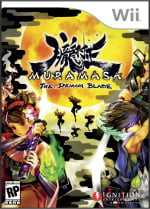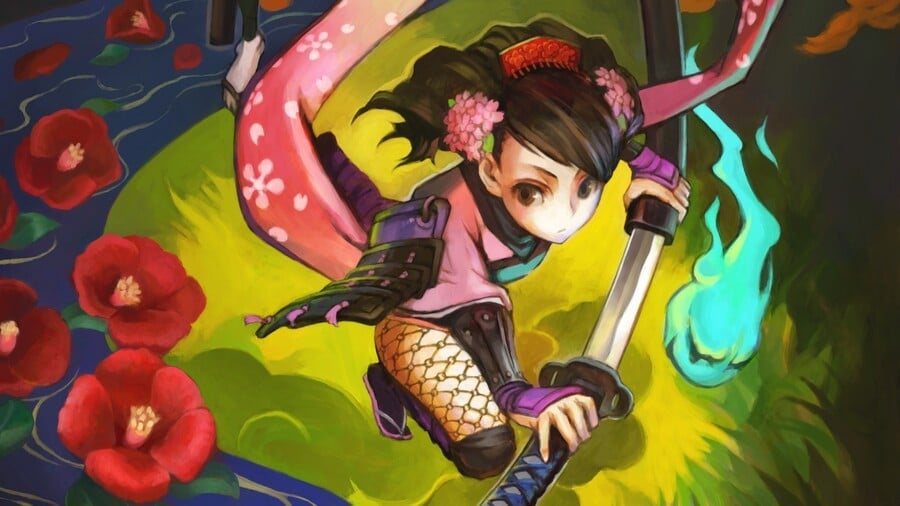
Soapbox features enable our individual writers and contributors to voice their opinions on hot topics and random stuff they've been chewing over. Today, Alana is talking about a Vanillaware oldie — Muramasa: The Demon Blade, a Wii title that is celebrating its 15th anniversary. And, in the wake of 13 Sentinels and Unicorn Overlord's success, it's time to give Vanillaware's older title some love.
Vanillaware has been pretty much everywhere. It's visited magical, mystical storybook worlds in Odin Sphere. It's returned to a medieval, warfaring world many times with Grand Knights History and Unicorn Overlord. It's been to 1980s Japan in 13 Sentinels: Aegis Rim. We've even been able to go to witch school thanks to GrimGrimoire. But despite the wide variety of softly painted and gorgeous worlds, I always find myself looking back to Edo Japan the fondest.
It was love at first sight with Muramasa: The Demon Blade, the developer's second title on a Nintendo system after the Japanese-exclusive Kumatanchi on the DS. It's not the most unique game in Vanillaware's library, nor is it the most complicated. But it's a darn good time that, with the recent success of 13 Sentinels and Unicorn Overlord, deserves to have its moment in the (rising) sun.
Muramasa: The Demon Blade has lots in common with Metroidvanias (progression gated behind skills/weapons, an interconnected map, some light platforming) but the game centres more on combat than deep exploration or secrets. The two lead characters — Kisuke, an amnesiac ninja whose only memory is that he must steal a particular katana; and Momohime, a princess who is possessed by the spirit of a criminal rōnin — play identically and explore essentially the same map. But the interweaving stories and the crisp and challenging combat kept me coming back for more.
Aside from Vanillaware's stunning art style — which shines best when streaming through the reed-laced fields soaked in a beautiful blood-red sunset or while ascending through the honey-coloured clouds of Takamagahara — Muramasa's standout feature is, as mentioned, its combat. This is an action RPG which you control by using one button for single attacks and combos, and holding it down to dash around the screen. It's incredibly simple but stylish, particularly when paired with the watercolour splendour of Vanillaware.
The wrinkle comes in the form of the weapons. You have a huge weapon tree where, from three starting blades, you can forge various 'Demon Blades' to use during your playthrough. You can equip three different swords at once and swap between them during combat. There are two sword types — Blades, which are short and fast, and Long Blades, larger, heavier, and more powerful weapons. Every sword has its own stats, but you can't just stick to a single one. Your swords also have Soul Power, which is consumed either by blocking attacks, taking damage, or using the weapon's Secret Art — an extremely powerful attack that, again, varies per weapon. If the sword's Soul Power is fully depleted, the weapon temporarily breaks.
This is where your weapon swapping comes in handy. Sheathing a blade and drawing another weapon will allow the other swords to replenish their Soul Power. Plus, drawing another with a full Soul Power gauge will trigger an attack that hits every enemy on screen. Don't tell me you've never seen a samurai movie where a warrior draws his blade and immediately decimates the entire room and never wanted to pull that off. It's just as cool here as it is in any show or movie I've ever seen.
To me, 'collecting' the swords is the draw. I want to see every single Secret Art and find that three-weapon combination that works for me. Hell Spinner, for instance, is an extremely fast horizontal spin that shreds foes on the ground, while Wind is an aerial vertical spin. Faerie Bolt allows you to have two electrical orbs surround your character for a limited amount of time, which protects you and does contact damage. Earth Runner is a relentless rush of sword stabs. Weaving a mix of light and heavy swords with defensive skills and fast-paced offensive Arts is my favourite way to go.
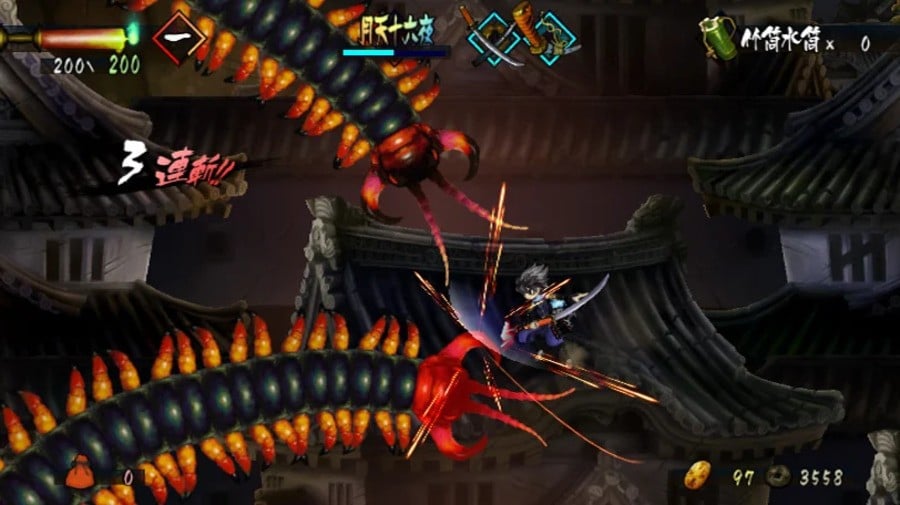
Even if the combat is simple on the surface, I still adore running into every single mob of enemies as I explore Honshu and the 16 provinces. A group of seven ninjas might halt my progress as I run through the rainy forests of Owari, but goodness is it fun to juggle them in the air and dart around the screen, taking them down one by one — or sometimes all in one fell swoop.
The combat really shines during Muramasa's incredible boss battles. Many of these are visual spectacles that require a mix of patience and aggression; learning enemy attack patterns and animations and then punishing them at the right time feels incredibly rewarding. Ippondatara is one of the game's biggest — a huge monster that towers above the clouds, you need to hack away at its feet before ascending and taking on his fists, all while reflecting projectiles with perfectly-timed sword slashes. Then you have to fight him in his boar form, where he is helpless and does no damage. Turns out, he's just been trying to keep a hot spring to himself.
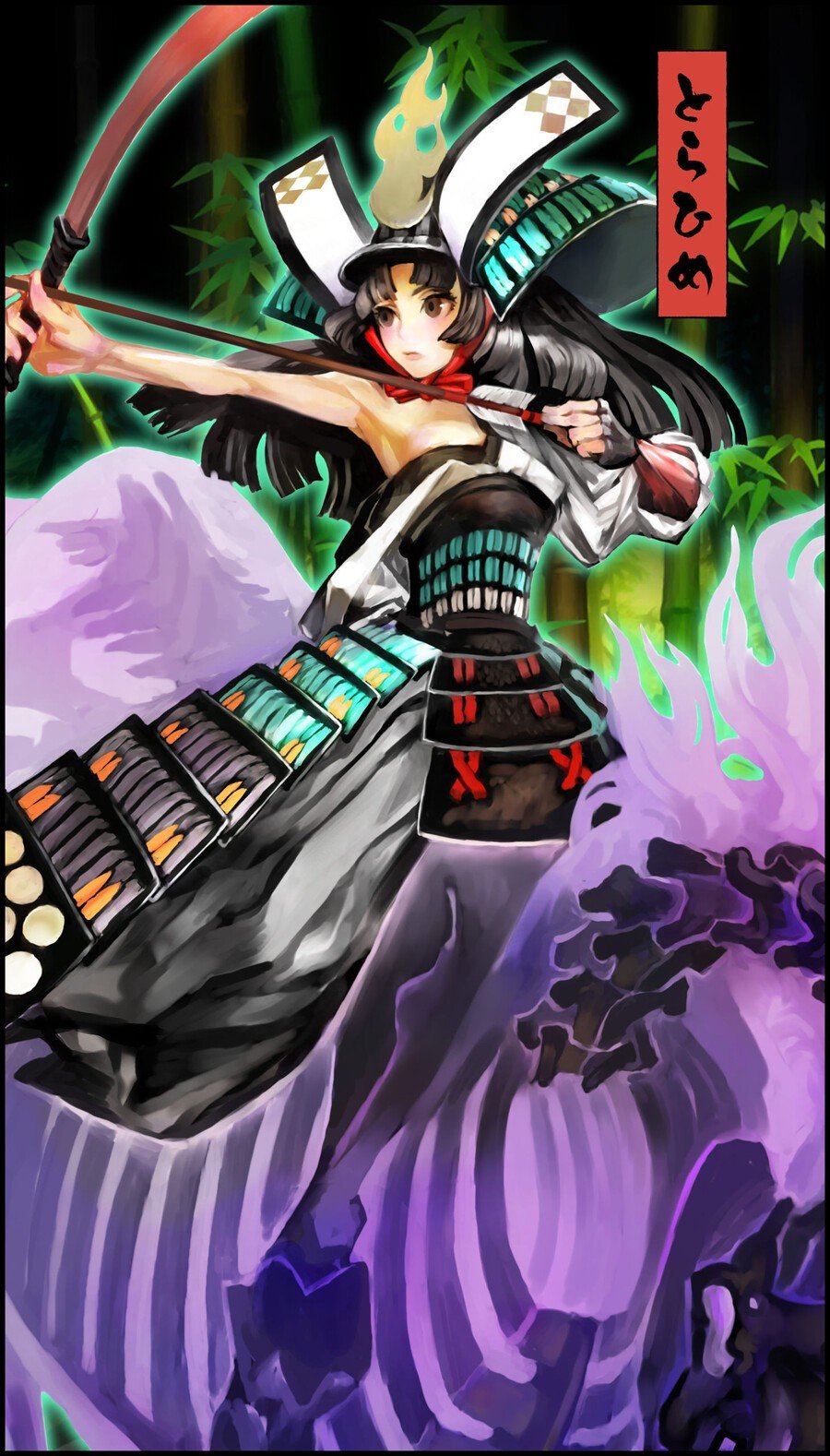
While fights with huge demons, giant spiders, or even the god of storms, Raijin, himself are incredibly memorable, the best are (as with many action games) those fights with another person. In Kisuke's story, he has to fight the woman he loves most in the world, Torahime. Commanding an army of undead soldiers and riding atop her skeletal, ghostly steed, Torahime dashes to the other side of the bamboo thicket, commanding her soldiers to battle against Kisuke. Then you have to chase her, avoiding her arrows by deflecting them or hiding behind the bamboo, It's not a particularly difficult fight — particularly compared to some of the later battles — but the sheer spectacle, the narrative revelations that come after, and the fact you're fighting a badass warrior princess atop a dead horse make it pretty darn amazing.
Some of those more difficult fights — like the final bosses, or even Wanyuudo the flaming wheel on Momohime's side — expose the beauty and balance of Muramasa's combat. If you're smart with your weapon choices and know when to block, you can get some incredibly satisfying combos and victories out of these encounters. But then there are the Caves of Evil dotted around the map. These unlockable challenges throw enemies and boss encounters at you in a short gauntlet, and get progressively harder the later into the game you get. These "caves" can be found by the dead tree trunks you'll discover as you explore, and are locked behind various different coloured barriers — meaning you need to get specific swords, usually from story bosses, to even tackle them.
Trials such as the Light Blue one which forces you to tackle seven samurai (ha!) enemies at once test your patience and your ability to break enemy guards. An earlier one, locked behind a green barrier, pits you against poison-inducing enemies. There's also a challenge where you have to rechallenge a boss from earlier in Kisuke's playthrough — except this time, there are four of them. The variety here once again tests your knowledge, and while it does force you to backtrack (I mean, it's got some Metroidvania DNA in there), who can complain about running through these gorgeous locations every single time? Not me.
With Vanillaware getting more attention than ever nowadays, I really wish Muramasa: The Demon Blade was easier to access. You can currently only play this game officially on the Wii or the PlayStation Vita — which is, admittedly, the far superior version with a better localisation and four DLC episodes with new characters and playstyles (one of which has you playing as a cat). The company's president George Kamitani has said that he wants to port the game to modern platforms — and god would Muramasa look good on the Switch OLED — but has said that "there are issues".
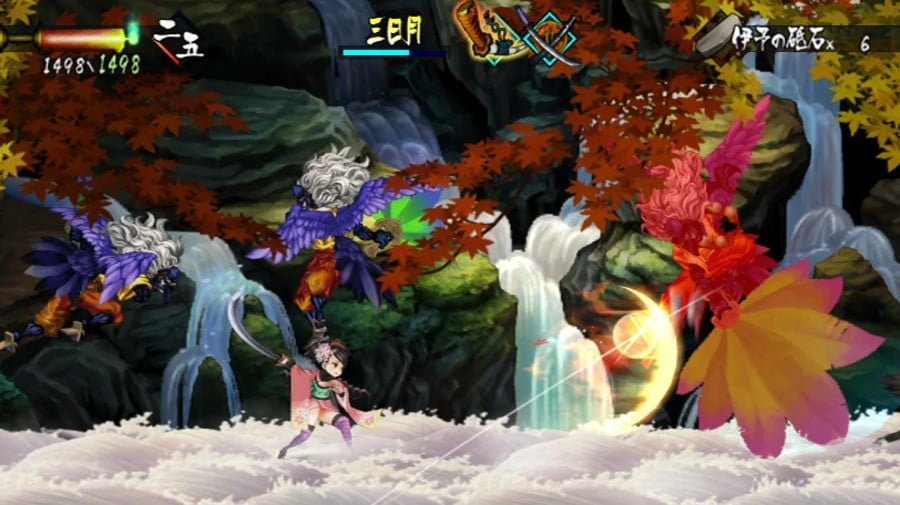
Having played multiple Vanillaware titles, it's fun to see the shared DNA in every single game despite how many genre differences there are in the developer's library. The action brawler-style combat of Dragon's Crown is in Muramasa, and almost every game has multiple storylines that intertwine with one another.
Muramasa: The Demon Blade might be Vanillaware's simplest title, and it doesn't defy many genre conventions like its other games do, but do I fondly miss the days of running through snowy mountains, hacking my way through the depths of hell, and forging the legendary sword? Of course I do.
Have you ever played Muramasa: The Demon Blade? Do you want to see the game on Switch (or modern platforms)? Let us know down below!
